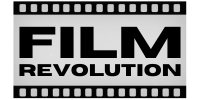The use of design principles like the Rule of Thirds, symmetry, and leading lines has enhanced how filmmakers compose shots. These visual techniques guide the audience’s eye to key elements in the frame, reinforcing the narrative and emotions. The careful placement of characters or objects within the scene can subconsciously convey power dynamics, relationships, and themes, influencing the viewer’s emotional connection to the story.
Color Theory and Mood: Colors are no longer just aesthetic choices but are strategically used to communicate mood, tone, and subtext. Filmmakers use color palettes to emphasize the emotional arc of a character or scene—warm tones for comfort and happiness, cool tones for sadness or tension. Think of how Schindler’s List uses the color red to highlight significant moments or how Blade Runner 2049 uses neon hues to create a dystopian, otherworldly atmosphere.
Lighting and Contrast: Lighting design plays a critical role in conveying a story’s themes and emotions. From chiaroscuro lighting (dark shadows with stark contrasts) that evoke mystery or danger to soft, natural light that creates intimacy, lighting techniques shape how the audience perceives a scene. Movies like The Godfather famously use low-key lighting to enhance the dramatic tension and depth of character.
Set and Production Design: The design of sets, props, and locations has evolved to tell stories on its own. The environments characters inhabit can offer a glimpse into their psyche or reflect the story’s larger themes. For example, the futuristic sets in The Matrix symbolize a world controlled by technology, while the worn-down, rustic settings in The Revenant immerse the viewer in survival and hardship, giving context to the characters’ struggles.
Typography and Motion Graphics: Modern movies, particularly in the action and sci-fi genres, use dynamic typography and motion graphics to reinforce the narrative and elevate storytelling. Films like The Social Network or the Marvel Cinematic Universe rely on opening credits and title sequences to introduce tone, key themes, and even important plot points, offering the viewer a glimpse of what’s to come in an engaging, often visually stunning manner.


